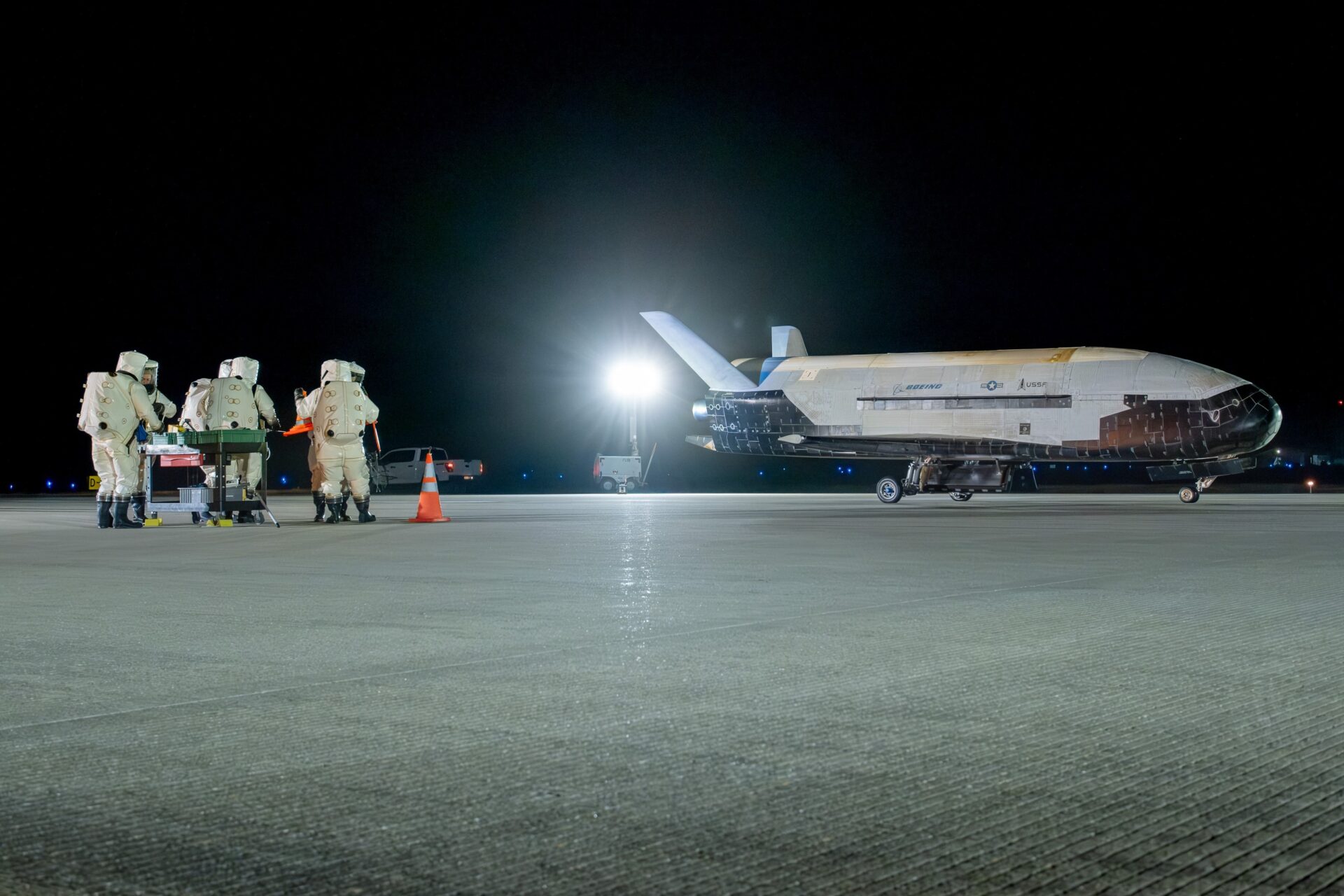The US Space Force’s experimental X-37B spaceplane is back in orbit. The reusable Boeing-built platform launched late on August 21, 2025, atop a SpaceX Falcon 9 from Florida’s Kennedy Space Center, kicking off its eighth mission in 15 years of operations.
The uncrewed vehicle separated from the rocket’s upper stage as planned and entered low Earth orbit, roughly 500 kilometers (310 miles) above the surface. Mission details remain classified, but the US Space Force has confirmed that the spaceplane will test a mix of navigation, communications, and payload-handling technologies.
From rapid turnaround to rapid testing
The launch comes less than six months after the X-37B completed its seventh mission, which ended with a landing at Vandenberg Space Force Base in California on March 7, 2025. That mission included a first-of-its-kind aerobraking maneuver that allowed the vehicle to change orbit while saving propellant.
This quick turnaround also highlights the X-37B’s growing role as an operationally ready testbed for new military and commercial space technologies.
Bigger payloads, more experiments
For this eighth flight, Boeing has added a redesigned service module that expands the spaceplane’s payload capacity. The upgrade allows the Space Force and its partners, including the US Air Force Research Laboratory and the Defense Innovation Unit, to run more complex experiments simultaneously.
Among the payloads are two key technologies. The first is a high-bandwidth laser communications system, part of the US Space Force’s push to link satellites and space assets through resilient, high-speed networks.
The second is a quantum inertial sensor, designed to deliver precise navigation data in GPS-denied environments. If proven reliable in orbit, the technology could eventually support missions in contested orbital zones or even deep-space exploration where GPS signals are unavailable.
A platform that keeps evolving
Since its debut, the X-37B has spent over 4,200 cumulative days in space, returning after every flight for inspection, upgrades, and mission planning. That reusability has made it a critical asset for testing and refining technologies faster than traditional satellite platforms allow.
Each successive mission has offered a glimpse into how the US Space Force sees the future of orbital operations: a mix of reusable platforms, rapid iteration, and resilient systems designed to survive and operate in increasingly contested space.
